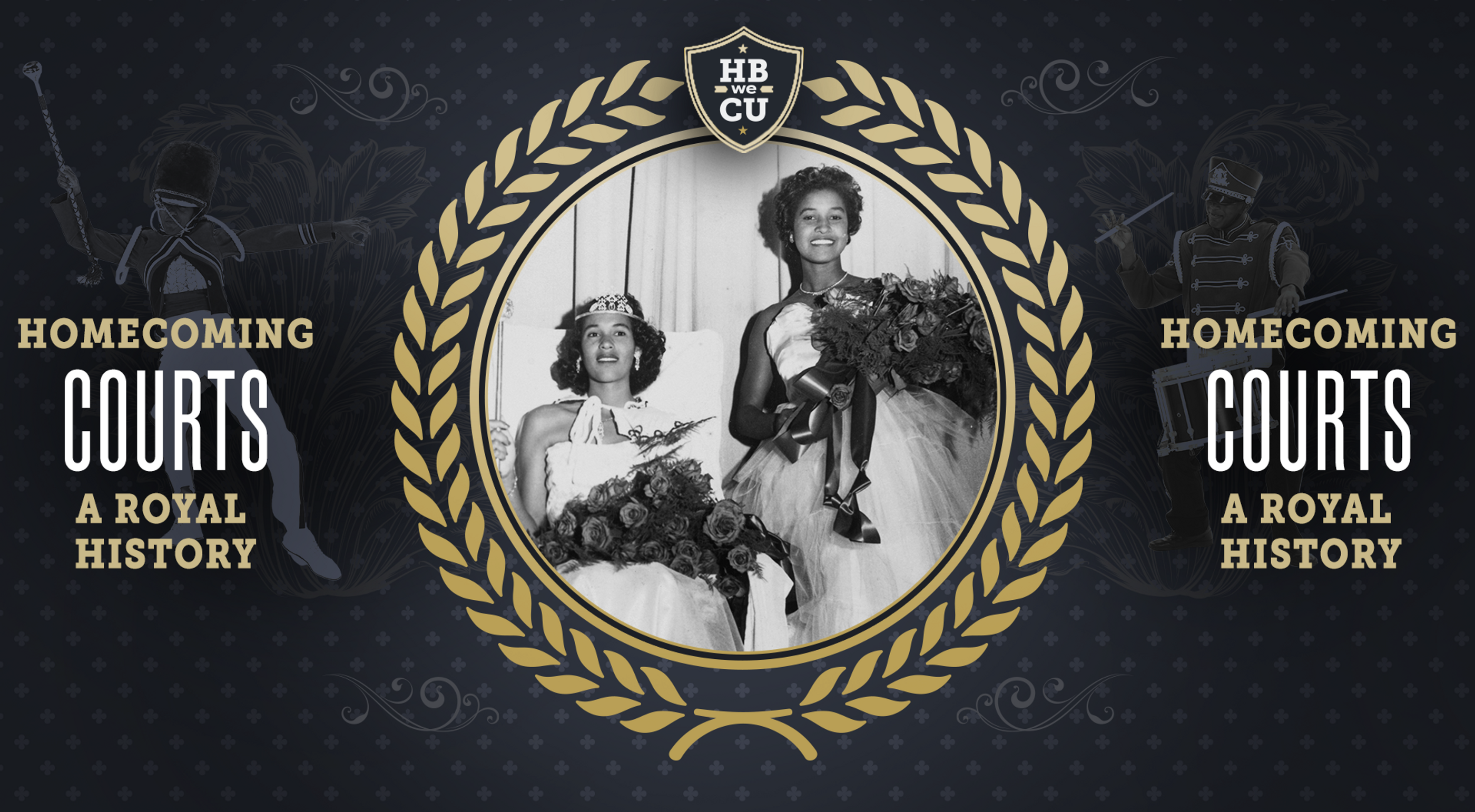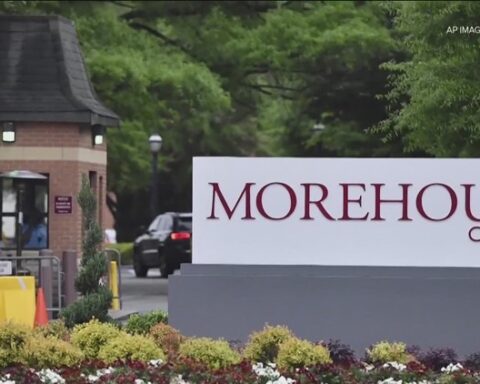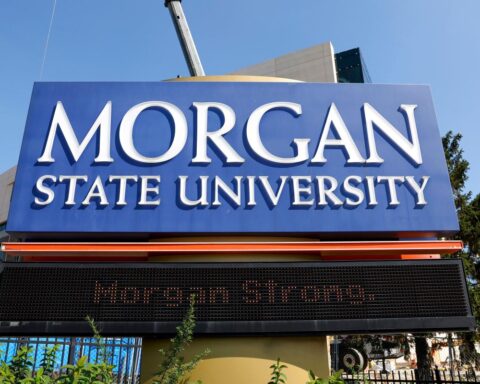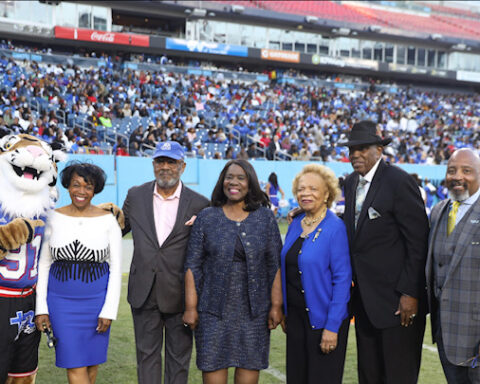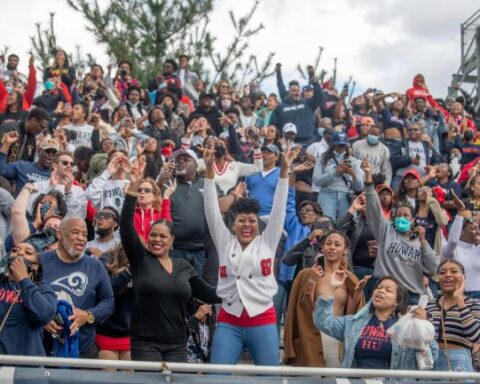By Naomi Ludlow
It might be the reunions between alumni, or maybe the Battle of the Bands. It could be fraternity and sorority step shows. Or it could be an affirmation of Black culture that goes back more than a century and has been passed down through the generations.
It could be all of these things and more. But the centerpiece to any HBCU homecoming is the crowning of a royal court and it is a tradition that has made HBCUs unique and something to be celebrated.
“It’s just as important as having a college band or cheerleaders. It identifies our own standards of beauty.” said Dale Williams, founder of Leadership for Queens, which focuses on mentorship and professional growth for HBCU queens, and who was also the 1992-1993 Miss Tennessee State University. “You can’t compare us to Miss America and Miss USA… for we were established on our campuses showing you that academia was important.”
She explained that homecoming courts date as far back as the 1920s and as more students showed up to the campuses of Black colleges and universities, the tradition began to increase and gain in importance in African American culture. Members of courts tend to be elected by their schools in their junior or senior years and installed in positions of leadership to represent the student body. The naming of the Queen or King (although many schools use “Miss” and “Mister” in the titles) is just the beginning of a yearlong duty to the school until the next year comes and a new court is announced.
“It’s just as important as having a college band or cheerleaders,” said Williams. “It identifies our own standards of beauty. If you look back at the yearbooks, I bet you can find yourself.”
Homecoming football games started with the advent of college sports and large schools, particularly in the Ivy League adopted cultures around them. But recognizing that their schools were filled with the culture that Black students brought with them from their homes, HBCUs decided to form their own stylized celebrations, which grew over the years. Part of those celebrations were adding royal courts, led by Queens and eventually Kings as well.
By the 1970s, crowning a Queen was a feature of virtually all HBCUs, according to research. But at some schools, homecoming courts have been substituted for campus royal courts where elected leaders spend the entire school year not only representing the university, but also being an attainable role model for current students.
But the position of campus Queens were not created to emulate beauty pageants, which had become popular a century ago, but rather to have a position focused on the upliftment of the student body,
“This is something you can brag about. This wasn’t created as a superficial means. You can’t compare us to Miss America and Miss USA .. for what we established on our campuses showed you that academia was important,” said Williams. “We’re not a pageant, but a position.”
After a competition process that includes voting, interviews and a look at their academic standing, the court is created. But they stand for more than a crown, and homecoming is the time for the court to be formally introduced.
The Link To HBCU History
The tradition of HBCU queens, of course, follows the history of HBCU homecomings themselves. It’s part of the creation of the Black College family that is now a very familiar component of what it means to be Black in America.
The week-long events bring together current students and alumni who have a common goal of passing down the importance of what the institution stands for: A rich history highlighting Black culture.
“Homecoming, in particular for the HBCU experience, mirrors this notion that we once had that’s rooted inside of our culture of trying to return and create this familial system that is kind of broken apart,” Dr. Cheryl Mango, assistant professor of history at Virginia State University, said.
Dating back to the period of slavery in America, Black people used Sundays as a grand occasion to gather and identify with people they lost connection with, Mango explains, which is replicated through HBCU homecomings.
Different schools create numerous events, many unique to their campuses to tailor their own homecoming experiences. “Homecoming is designed to welcome people home. It’s a sense of feeling and belonging even for those who did not go to Morehouse,” Henry Goodgame, Morehouse College’s Vice President of External Affairs and Alumni Relations, said. “They should feel what love feels like when you come to an HBCU.”
Virginia State University, located in Petersburg, Va., incorporates numerous events to highlight the start of homecoming celebrations. Notably, their “Light the Stadium” event is a newly formed tradition to bring students, faculty and alumni to their football stadium to kick off the week-long festivities.
Although current students and alumni serve as a focal point of homecoming, the festivities can be used for prospective students. It’s common to see high school marching bands participate in the homecoming parade which gives students a first-hand account of the HBCU experience.
This year, more than 700 participating high school students will receive a presentation on what it takes to become a student at Virginia State University.
Meanwhile, in Washington D.C., Howard University will recognize the state of the university in the president’s formal address, according to the institution’s website. Additionally, Morehouse College will hold its annual Legacy Reception for sons of Morehouse men.
“This is the time for the college to speak to you,” Goodgame said about prospective students.
Interest in HBCUs have spiked in recent years as the resurgence of the Black Lives Matter movement took place across the nation, and HBCUs serve as safe spaces for Black people.
“I do believe we’re living in a HBCU renaissance… HBCUs were in a dark period a while ago where we didn’t know if we were going to survive and that was across the board,” Dr. Mango said.
Black culture, including beauty, music and fashion, is exuded in this safe space. Black professionals are able to remove the societal pressures to enjoy the moment and step away from their daily duties.
“Homecoming is the HBCU experience. It’s what we show up and show out for because we need it,” Thomas said.
Alumni travel from around the country to recognize the advancements of their alma mater, relive their undergraduate experiences and connect with new and former students. And students essentially take a step back from their academics to continue building connections they hope to maintain for decades to come.
While it seems to be all fun throughout the week, networking is a huge part of the festivities.
“Networking at homecoming happens organically,” said Taylorr Thomas, a senior marketing student at Hampton University. “Those connections… have turned out to act as a guide or mentor.”
Students and alumni alike are in a relaxed environment where they are able to relate on their hometowns, majors or interests, Thomas explains. All pressures go out the window.
Private events are set up for the campus leadership to meet with former campus leaders. At North Carolina A&T, student government association members, new and old, exchange their personal accounts. And in keeping with tradition, there is a gathering of queens throughout the years to honor the newest queen.
“Women come in and tell their stories about how voting was and experiences and how it changed their lives, the position becomes more real and important,” said Williams reminiscing about her experience as Miss TSU. “We don’t want you to be perfect. We want you to be prepared.”

